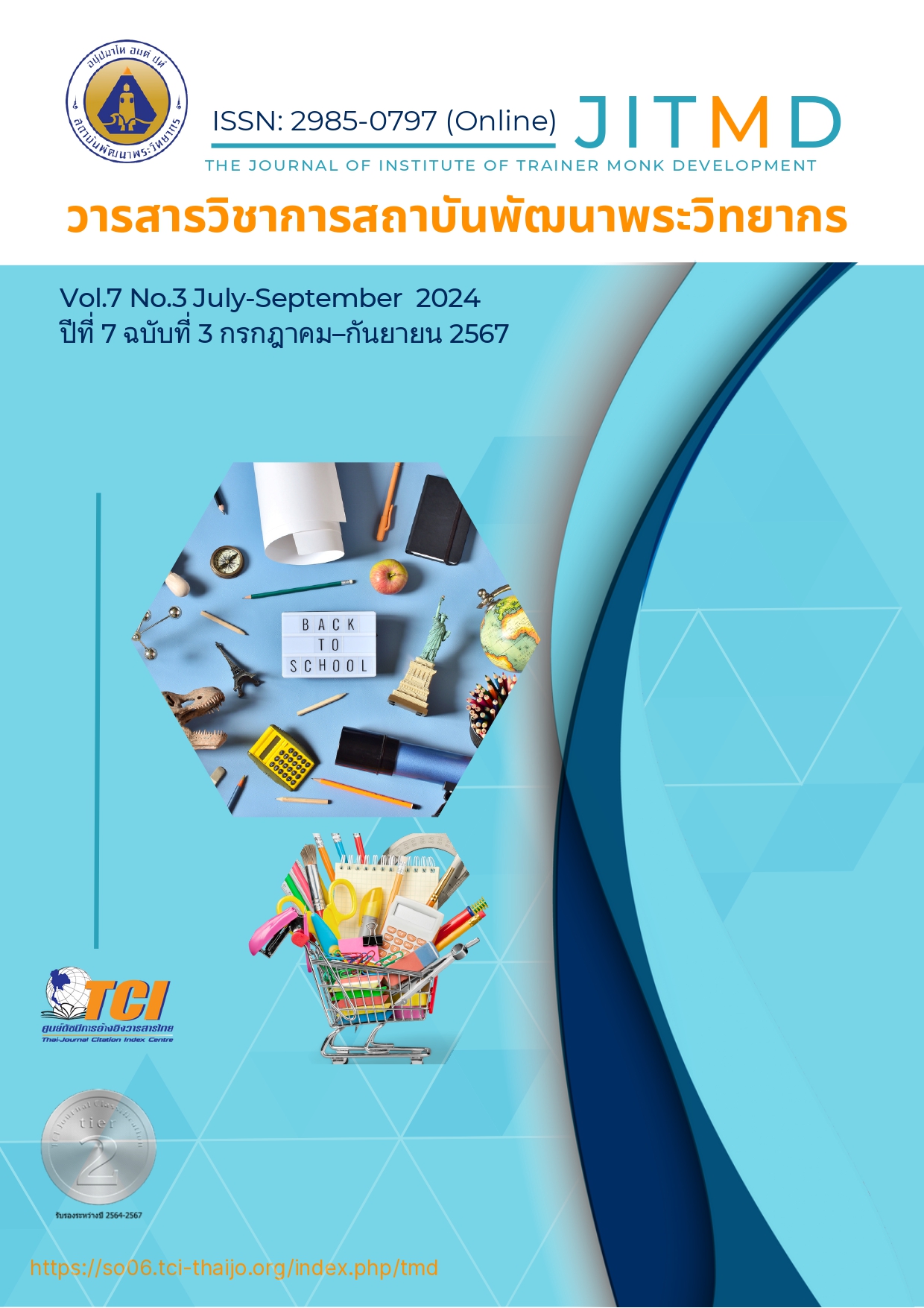Development of Mathematical Problem Solving and Communication Abilities Using the Cooperative Learning Technique TGT on Factoring Quadratic Polynomial of Mathayom 2 Students at Banharn Jamsai Wittaya 6 School
Main Article Content
Abstract
The research aimed to: 1) compare the learning achievements in mathematics before and after learning by the cooperative learning technique TGT and the achievement after learning with 70 percent criterion 2) compare the problem solving abilities of students after learning by the cooperative learning technique TGT with 70 percent criterion 3) compare the mathematical reasoning abilities of students after learning by the cooperative learning technique TGT with 70 percent criterion and 4) study the satisfaction of the students towards the cooperative learning technique TGT. The statistics used for data analysis were: mean, percentage, standard deviation, t-test for dependent samples and t-test for one sample. The sample group consisted of 25 eighth-grade students at Banharn Jamsai Wittaya 6 School, derived by cluster random sampling. The research instruments were: 1) lesson plans 2) an achievement test 3) an ability test on problem solving and mathematical communication abilities and 4) a satisfaction assessment form. The results showed that: 1) the students’ learning achievement after learning by the cooperative learning technique TGT was higher than that of before and then 70 percent criterion with statistical significance at .05 2) the students’ problem solving after learning was higher than 70 percent criterion at significant level .05 3) the students’ mathematical communication ability after learning was higher than 70 percent criterion at significant level .05 and 4) the level of satisfaction from the student as a whole was the highest level.
Article Details

This work is licensed under a Creative Commons Attribution-NonCommercial-NoDerivatives 4.0 International License.
บทความที่ได้รับการตีพิมพ์เป็นลิขสิทธิ์ของวารสารวิชาการสถาบันพัฒนาพระวิทยากร
ข้อความที่ปรากฎอยู่ในบทความที่ได้รับการตีพิมพ์ในวารสาร ถือเป็นความรับผิดชอบของผู้เขียนบทความ และข้อคิดเห็นนั้นไม่ถือว่าเป็นทัศนะและความรับผิดชอบของกองบรรณาธิการวารสารวิชาการสถาบันพัฒนาพระวิทยากร
References
จีรนันท์ แก้วปินตา. (2562). การส่งเสริมทักษะการสื่อสารทางคณิตศาสตร์และผลสัมฤทธิ์ทางการเรียนคณิตศาสตร์ ของนักเรียนชั้นมัธยมศึกษาปีที่ 2 โดยใช้การสืบเสาะหาความรู้. วิทยานิพนธ์ศึกษาศาสตรมหาบัณฑิต สาขาวิชาคณิตศาสตรศึกษา. มหาวิทยาลัยเชียงใหม่.
ทิศนา แขมมณี. (2555). ศาสตร์การสอน: องค์ความรู้เพื่อการจัดกระบวนการเรียนรู้ที่มี ประสิทธิภาพ. กรุงเทพฯ: จุฬาลงกรณ์มหาวิทยาลัย.
บุญชม ศรีสะอาด. (2537). การพัฒนาการสอน. กรุงเทพฯ: สุวีริยสาสน์.
ปรียาพรรณ พระชัย. (2560). การพัฒนาผลสัมฤทธิ์ทางการเรียนและทักษะการแก้โจทย์ปัญหาโดยใช้ การจัดการเรียนรู้แบบร่วมมือเทคนิค TGT ร่วมกับแบบฝึกทักษะ เรื่องการคูณ ชั้นประถมศึกษาปีที่ 3. ปริญญาครุศาสตรมหาบัณฑิต. มหาวิทยาลัยราชภัฏมหาสารคาม.
ภูวภัทร อ่ำองอาจ. (2561). การศึกษาผลสัมฤทธิ์ทางการเรียนวิชาคณิตศาสตร์และทักษะการคิด คำนวณ เรื่องการบวกและการลบ ของนักเรียนชั้นประถมศึกษาปีที่ 1-2 แบบคละชั้นเรียน ที่ได้รับการจัดการเรียนรู้แบบร่วมมือเทคนิค TGT. ปริญญาศึกษาศาสตรมหาบัณฑิต. มหาวิทยาลัยเทคโนโลยีราชมงคลธัญบุรี.
เมลดา รุ่งเรือง. (2562). ผลสัมฤทธิ์ของการจัดการเรียนรู้แบบร่วมมือโดยใช้เทคนิค TGT และ STAD ในรายวิชา คณิตศาสตร์ สำหรับนักเรียนระดับมัธยมศึกษา. วิทยานิพนธ์วิทยาศาสตรมหาบัณฑิต สาขาวิชาคณิตศาสตร์ศึกษา. มหาวิทยาลัยศิลปากร.
สถาบันส่งเสริมการสอนวิทยาศาสตร์และเทคโนโลยี. (2555). ทักษะและกระบวนการทางคณิตศาสตร์. กรุงเทพฯ: 3-คิว มีเดีย.
สิริพร ทิพย์คง. (2545). หลักสูตรและการสอนคณิตศาสตร์. กรุงเทพฯ: พัฒนาคุณภาพวิชาการ.
อดิวัฒน์ เรือนรื่น. (2563). การศึกษาผลสัมฤทธิ์ทางการเรียนวิชาคณิตศาสตร์ เรื่องจำนวนเต็มของนักเรียนชั้นมัธยมศึกษาปีที่ 1 โรงเรียนบ้านหนองเค็ด โดยใช้วิธีการสอนแบบ TGT. วิทยานิพนธ์วิทยาศาสตรมหาบัณฑิต สาขาวิชาคณิตศาสตร์ศึกษา. มหาวิทยาลัยศิลปากร.
อุกฤษฏ์ ทองอยู่. (2562). การพัฒนาความสามารถการแก้โจทย์ปัญหาทางคณิตศาสตร์โดยใช้การ เรียนรู้แบบร่วมมือเทคนิค TGT ชั้นประถมศึกษาปีที่ 2. วิทยานิพนธ์ศึกษาศาสตรมหาบัณฑิต สาขาวิชาหลักสูตรและการสอนวิทยาลัยครุศาสตร์. มหาวิทยาลัยธุรกิจบัณฑิตย์.


